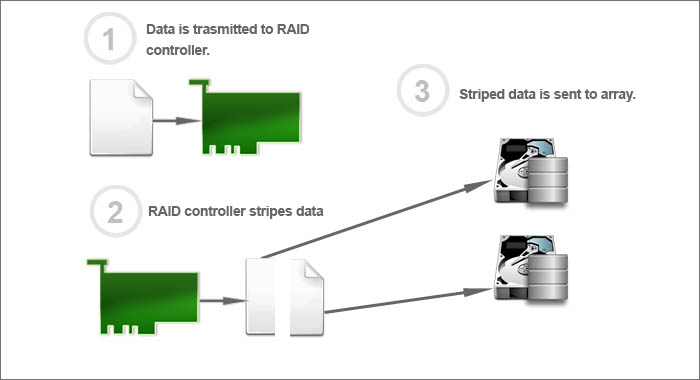 |
 |
 |
RAID Implementation Types
 RAID 0
RAID 0
RAID 0 is not really a "true" RAID system, as there is no fault tolerence involved here. What it does is to stripe each data block and write the striped data into different drives.
As such RAID 0 literally has no redundancy at all compared to other RAID arrays. So why use RAID 0 at all? For that we need to know how RAID 0 is set up.

- Data is first sent from server to the RAID controller.
- Then the RAID controller stripes the data.
- Finally, the striped data is sent to the array.
![]()
RAID 0 requires at least 2 drives. Files are striped and sent to the drives in the array. This process gives the performance enhancement of any single level RAID system as there is no redundancy.
RAID 0 incurs the lowest cost, but has zero fault tolerance. As such, if you lose data, RAID 0 will take the longest time to recover from. Additional backup is needed, unless data is not important.
However, read and write performance is great. It has its uses such as high end gaming, web streaming and editing for videos and music and other uses which require fast read write speeds but do not have critical data.


